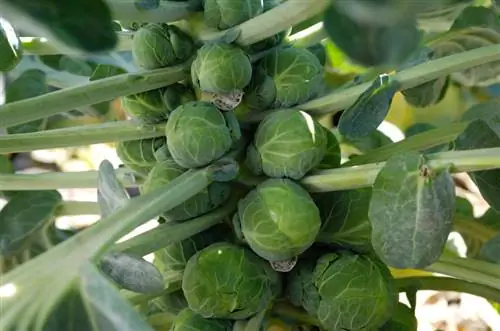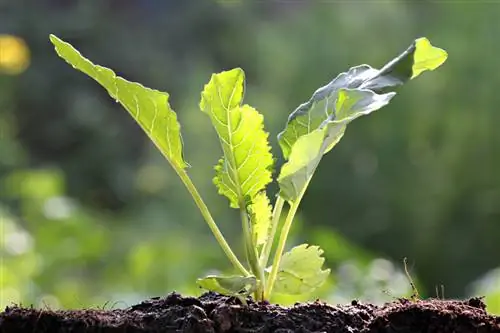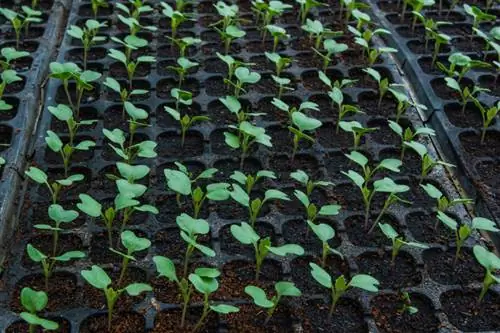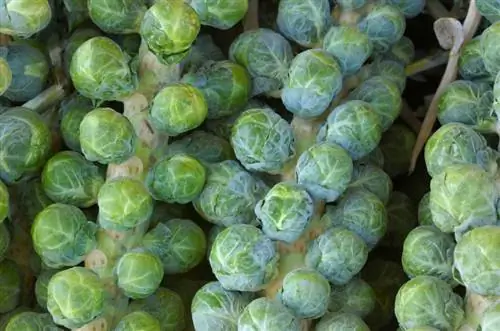- Author admin [email protected].
- Public 2023-12-16 16:46.
- Last modified 2025-01-23 11:19.
Don't be afraid of planting Brussels sprouts in the garden! With the right care, you can harvest the aromatic florets well into January and ensure he althy vitamins on the table even in winter.
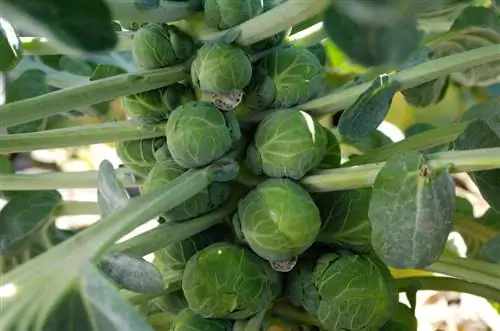
How to grow Brussels sprouts in the garden?
To grow Brussels sprouts successfully, you should prepare the soil in March, sow in April, plant and transplant in May, fertilize in July and September, hill up in August and harvest from September to January, depending on the variety.
How to plant Brussels sprouts in your own garden
Brussels sprouts are cruciferous vegetables. That's why you should never plant Brussels sprouts in the same spot two years in a row. By changing it every year, you prevent the dreaded clubroot from spreading and making the soil unusable for cruciferous vegetables for a long time. Follow the roadmap for growing Brussels sprouts:
- March: Preparing the soil
- April: Sowing
- May: plant out and prick out
- July: fertilize, pile up
- August: piling up
- September: fertilize
- harvest from September to January depending on the variety
Prepare the soil well. As a heavy feeder, Brussels sprouts require very nutrient-rich soil. Loosen the soil thoroughly and refine it with compost soil, stable manure or horn meal (€6.00 at Amazon). A good option in spring is green manure, for example with Phacelia, which is worked under before planting the Brussels sprouts. From the second week of April you can sow directly outdoors. It's even better if you plant seedlings on a frost-free windowsill in March. This will significantly shorten the time until the first harvest. The small plants come into the bed at the end of the Ice Saints at the latest.
Keep well moist and fertilize twice
Brussels sprouts need a lot of space so that the florets can develop well. So only sow very thinly and prick out the rows as soon as the first plants have developed six to eight leaves. Leave only the strongest seedlings 20 centimeters apart. At first, water only moderately so that enough roots can form. Later, keep the rows nice and moist without causing waterlogging. Cover the soil with mulch, such as grass clippings, or plant cover crops such as lettuce, peas, carrots or spinach between the Brussels sprouts. Since Brussels sprouts stay on the bed for a long time, you make good use of the space in the bed and at the same time prevent the soil from drying out.
During the growing season, fertilize the Brussels sprouts at least twice, either with manure or horn meal (€6.00 at Amazon). The florets cannot tolerate too much nitrogen, so they do not become solid. Hill up the soil several times so that the plants develop more roots and find a secure hold. Regular weed pulling is just as mandatory as checking the plants for pests.
Tips & Tricks
Wait until the first frost to harvest the Brussels sprouts. The cold gives the delicate florets their right aroma.

